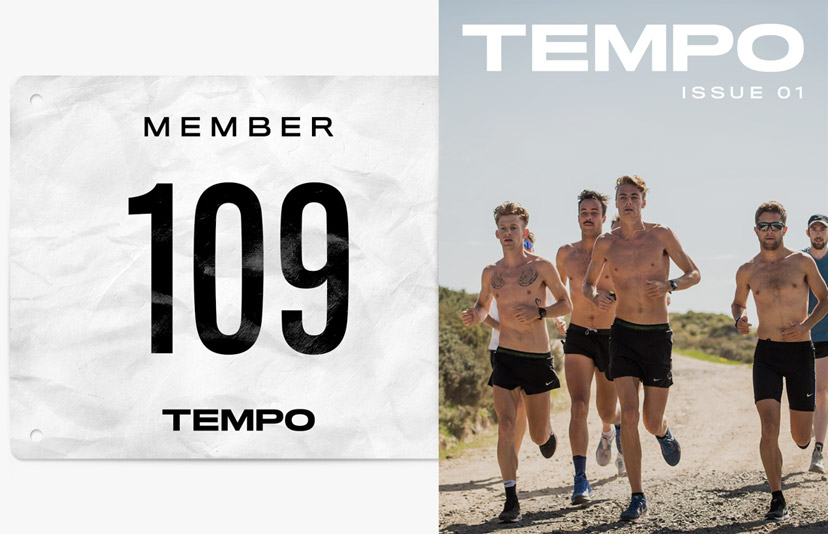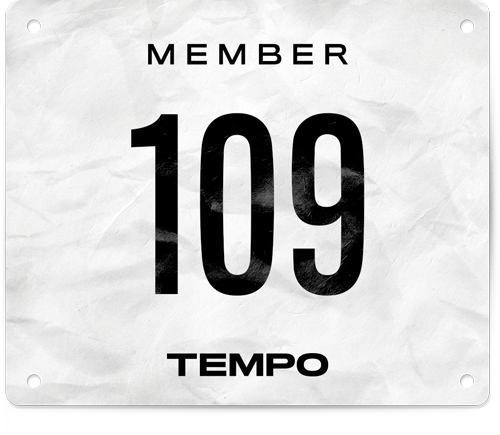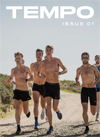Performance
The time is now for Milly Clark
Milly Clark targets Tokyo 2020 and the national record
2:28.08 ---- This was the time that greeted Milly Clark as she finished the 2019 Gold Coast marathon.
“When I saw I was almost a minute-thirty faster than the Tokyo Olympic qualifying time, there was a feeling of pure joy, because I didn’t really expect it,” she says. “I was so relieved.”
A sprinter-turned-distance runner, Clark was Australia’s top finisher at the 2016 Rio Olympics, placing 18th in the women’s marathon. At age 27, the Tasmanian seemed poised for stardom in the event; a virtual lock for future national teams.
But in early 2018, she suffered a stress fracture in her right foot. Eager to represent Australia at the Half Marathon World Championships in Valencia, she rushed back after only four weeks.
It was a costly miscalculation. The injury recurred, and her foot fractured in two additional places, sidelining her for almost all of 2018.
“That string of injuries really halted her progress,” recalls Philo Saunders from the Australian Institute of Sport, who began coaching Clark around that time. “The goal was just to get her healthy and build back the right way so she could absorb training again.”
Gold Coast was Clark’s first marathon post-injury. With a short two-month build beforehand, she went out conservatively, hitting halfway in about 75 minutes. But Clark was feeling strong. She sped-up. She fought. And she ran the back-half nearly two minutes faster.
The negative split saw her finish 2nd in the race, only 12 seconds behind Kenya’s Rodah Jepkorir Tanui (currently ranked 56th by World Athletics).
At the time, the result gave her Australia’s third fastest Olympic qualifier for the marathon, behind Sinead Diver (2:24.11 in London, April 2019) and Ellie Pashley (2:26.21 in Nagoya, March 2019).
Australia can only select three female competitors (plus a reserve), so this was a coveted spot. Dreams of Tokyo 2020 crept into the periphery of Clark’s mind. Memories of Rio resurfaced: the finish line, the pride of wearing the Green-and-Gold, team camaraderie…
But Clark was realistic: “I knew that if I was lucky, I’d be safe, but I also needed to be prepared to run another marathon and go even quicker.”
It was the correct mindset to have.
In January 2020, Clark was leapfrogged in the rankings by three-time Olympian Lisa Weightman, who ran 2:26.02 in Osaka, Japan.
“The depth in the women’s marathon is pretty phenomenal at the moment,” Clark admits. “Whoever the selectors take will serve Australia very well, and they’ll deserve to be there.”
“Sinead and Ellie seem to be improving with every marathon. I take my hat off to them… because they work very hard. But what they’ve accomplished also inspires me.”
Milly Clark
In mid-March, Clark will run the New York City Half Marathon. It’s a tune-up race for her main event, three weeks later.
On Sunday 5 April, Clark will toe the line at the Rotterdam Marathon in the Netherlands. Starting in the women’s elite field, she’ll target sub-2:26.00 with an even split over the flat course.
The goal, she tells TEMPO, is to take more than 2 minutes off her personal best, and get into the 2:25's.
“In terms of my training and my fitness, I’m definitely capable of going under 2:26.”
Clark has been quietly showcasing her elite-level fitness in her home state of Tasmania. In January, she ran a pair of course PBs at the Cadbury Running Festival in Hobart, winning the half marathon (1:13.04) and the 10 km event (34:01) in the same morning.
At the end of February, she finished a close second at the Hobart Run the Bridge 10km race, crossing the line in 33:16.
Coach Saunders agrees: “Milly is in the shape of her life… She is going a lot better than July last year when she ran 2:28 and has much more preparation in her legs for this marathon.”
Saunders says her marathon-specific sessions have been “particularly impressive”.
“I don’t train with any other runners here [in Launceston],” she says, “so to finish those sessions on my own, in non-competitive conditions, with nobody around, it certainly gives me confidence that I can replicate it in a race.”
Clark expects nerves and “apprehensive feelings” to appear, perhaps in transit. But for now, she says she feels calm; ready.
Across the left side of her back, Clark has an unmissable tattoo: a large, blue-green and yellow phoenix, with its wings spread-open in flight.
In ancient Egyptian and Greek folklore, the phoenix was famed for being immortal and one-of-a-kind. When this singular creature died, in a burst of flame, another glorious version would be reborn from the ashes.
“When I catch a glimpse of the tattoo now, in a reflection... it’s a reminder of what I’ve accomplished and what I’ve overcome in the past,” says Clark.
“It’s a reminder that no matter how bad, or how awful things get, you can always come out better and more beautiful on the other side.”
Clark has proven her doubters wrong. She’s reached the pinnacle of her sport. But success at the Rio Games didn’t translate into automatic happiness back in Sydney, her home since 2009.
She was working as a dietitian, specialising in sports nutrition, but was spending up to three hours commuting to-and-from work, and was waking up at 4am to squeeze her training in. She was running 200 kms per week, and she was exhausted.
“It was just an unhealthy environment for me. I was getting injured, and I was really unhappy.”
So, she moved to Launceston, to be closer to her family. “Moving home was refreshing. I could focus more on my training, on resting, and just enjoying life.”
And while the stress fractures were a setback, Clark now calls them a “blessing in disguise”.
She says the 8-month break gave her an opportunity to improve her professional credentials in sports nutrition; to explore new and old relationships and friendships; to map-out a new training regime (with lower mileage and more gym workouts); and to re-evaluate her aspirations.
“When I was younger, I had three goals,” she laughs. “To own a pug, to go to the Olympics and to watch the Red Hot Chili Peppers live in concert.”
Clark got her pug, Ollie, in 2009. She went to the Olympics. And in 2019 she finally saw the Chili Peppers live in Hobart (then again in Sydney).
So, what’s next? Tokyo 2020 remains her priority. But Clark knows it might not happen; things may not go to plan on race day.
Rather than dreading that scenario, she’s set another equally audacious goal.
Far from a fall back plan, Clark says she’s chasing the Australian women’s marathon record of 2:22.36, set by Benita (Willis) Johnson in 2006, when she was 37.
“I want to get as close to that marathon record as possible,” says Clark, who will turn 31 in March. “I know I still have a lot to learn about the marathon, but also a lot of room to improve.”
“It’s pretty exciting,” she says. “I don’t really know what I’m capable of yet.”
Like the mythical phoenix that adorns her back, Clark has displayed her physical resilience, returning from injury faster over 42.195 km than ever. If she chases down the marathon record, an immortality, of sorts, could also be within her grasp.
Regardless, Milly Clark is a name the Australian running community will likely stay familiar with for a long time.


